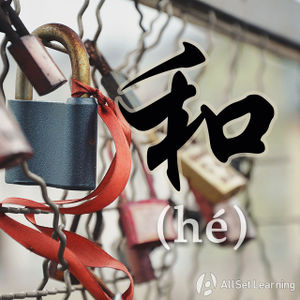Difference between revisions of "Expressing "and" with "he""
ViktorMugli (talk | contribs) |
Yangrenjun (talk | contribs) |
||
| Line 1: | Line 1: | ||
| + | {{Grammar Box}} | ||
== Structure == | == Structure == | ||
| Line 33: | Line 34: | ||
[[Category:A2 grammar points]] | [[Category:A2 grammar points]] | ||
| + | {{Basic Grammar|和|A2|N1 + 和 + N2|你 <em>和</em> 她。|grammar point|ASGP0KFF}} | ||
| + | {{Similar|Expressing "In Addition" with "haiyou"}} | ||
| + | {{Similar|"In Addition" as "lingwai"}} | ||
| + | {{Similar|Expressing "Not Only… But Also"}} | ||
| + | {{Similar|Combining Verbs with "bing"}} | ||
Revision as of 04:37, 13 June 2012
-
Level
-
Similar to
-
Used for
-
Keywords
Structure
The most common way to express "and" in Chinese is with 和 (hé). It's important to note that 和 can only be used to link nouns. Verbs cannot be linked with 和.
Noun 1 + 和 + Noun 2
Examples
- 我 和 我 姐姐 一起 到 公园。
- 我 喜欢 啤酒 和 葡萄酒。
- 小李 和 小王 一起 工作。
See also
- Expressing "In Addition" with "haiyou"
- "In Addition" as "lingwai"
- Expressing "Not Only… But Also"
- Combining Verbs with "bing"
Sources and further reading
Books
- Basic Patterns of Chinese Grammar (pp. 74-5) →buy
- Chinese: An Essential Grammar, Second Edition (pp. 14-5) →buy



